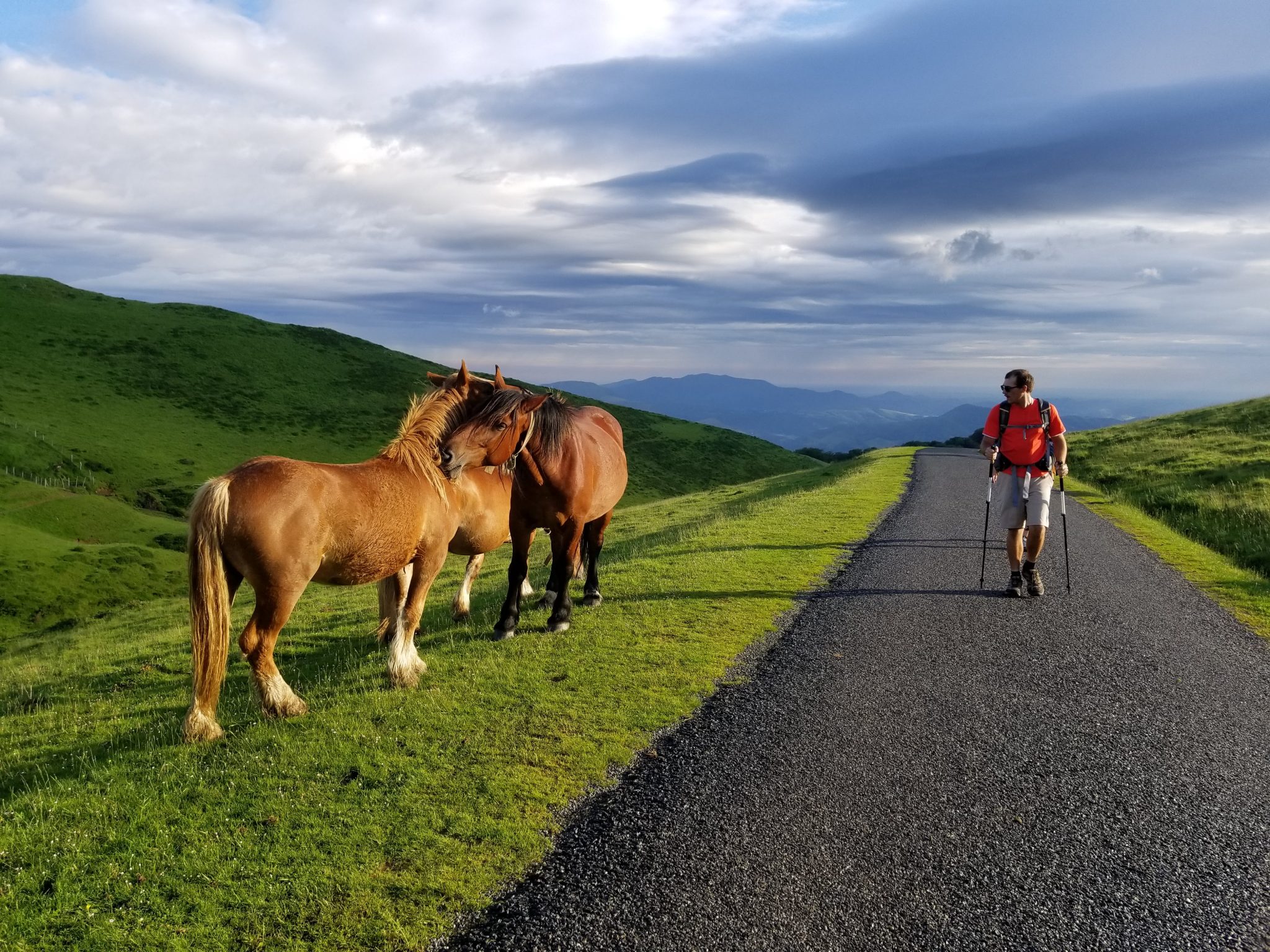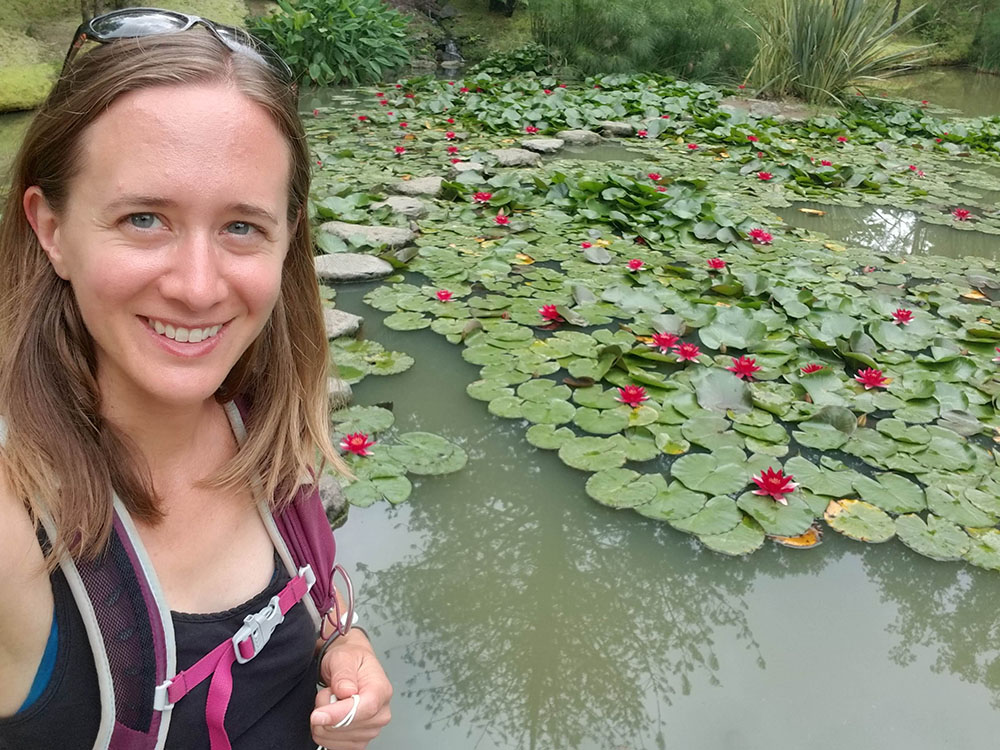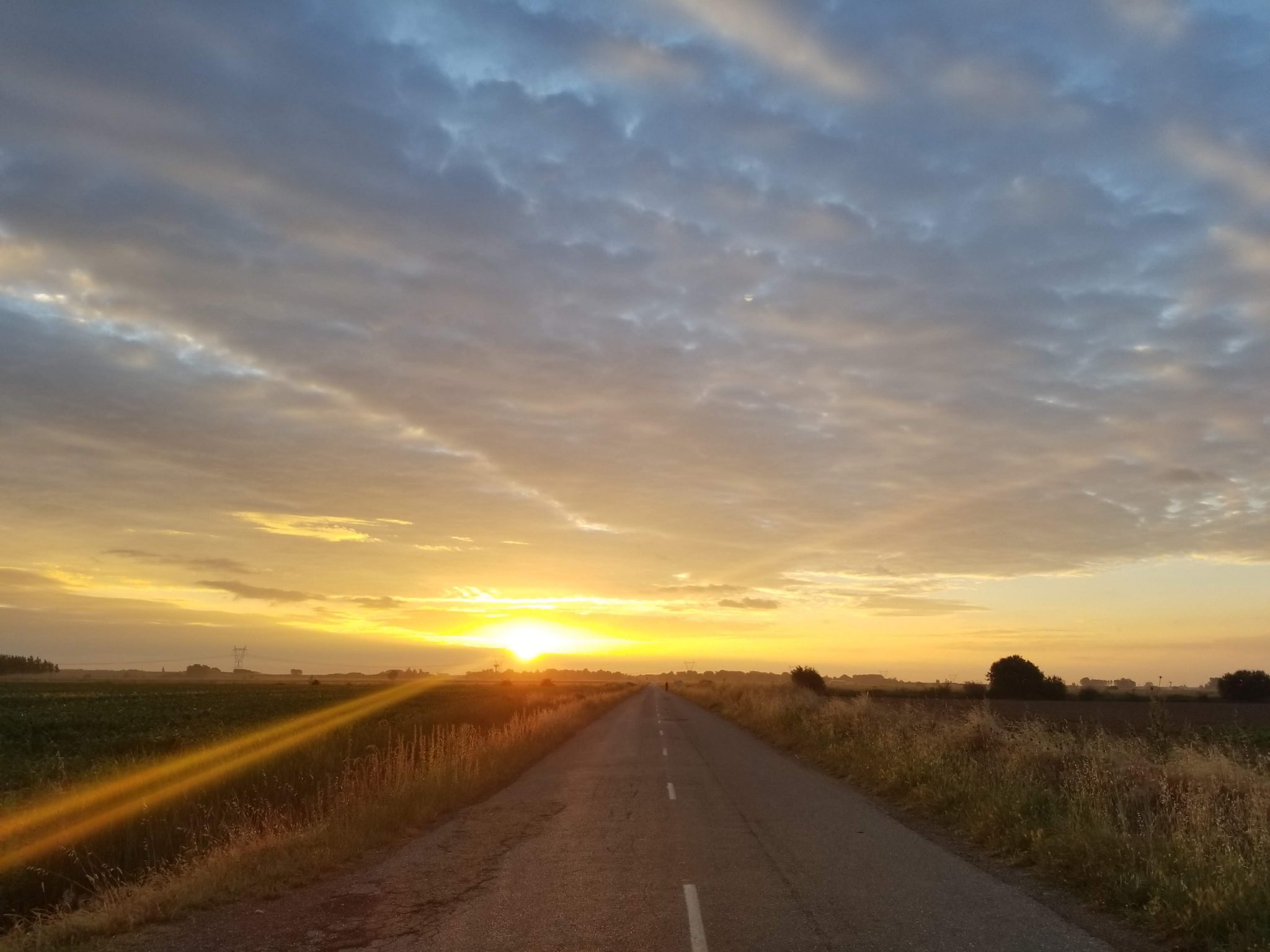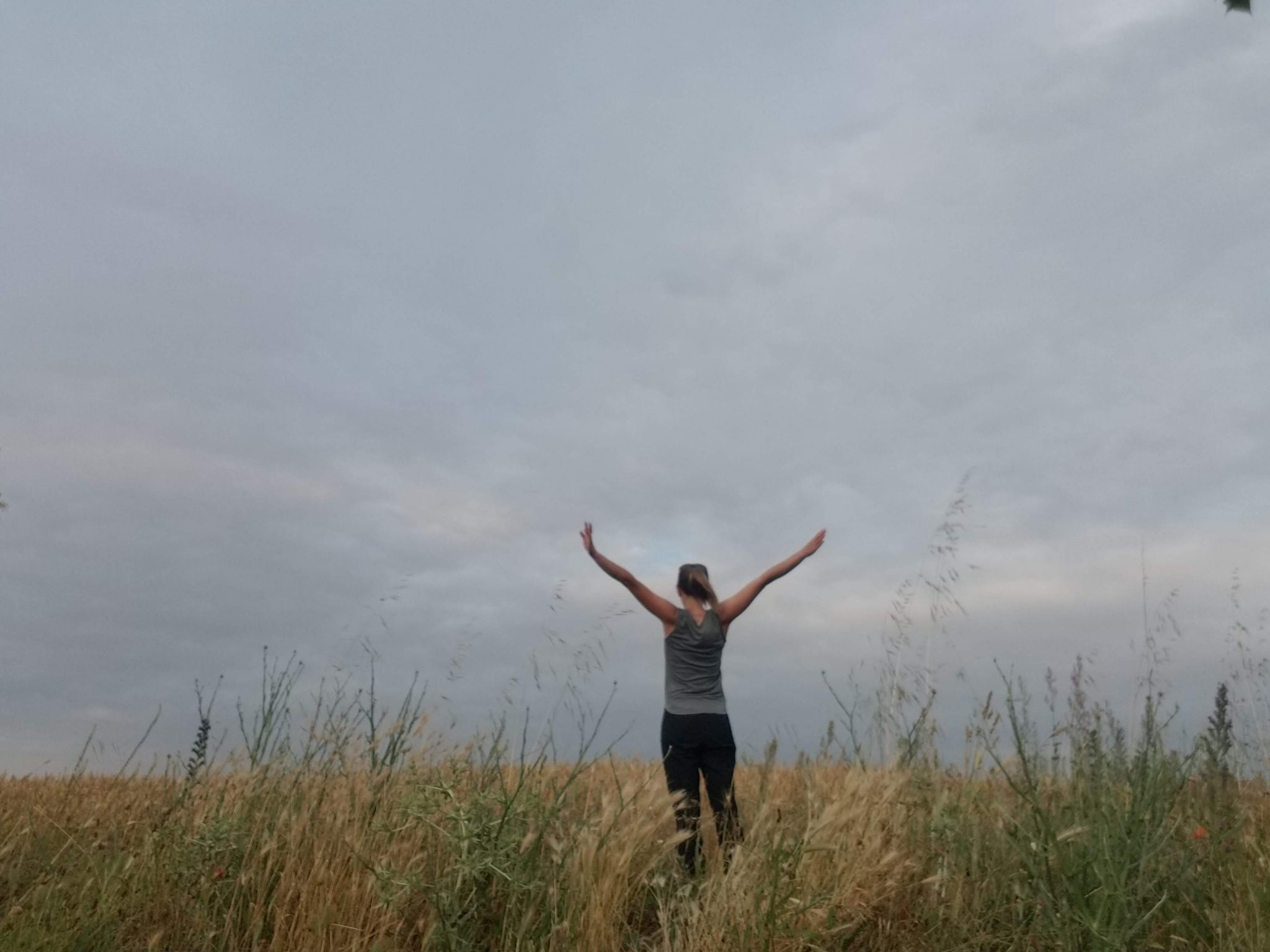The Camino de Santiago is an ancient pilgrimage. There are many paths and starting points all over Europe. The one thing that all these paths have in common is that they finish in Santiago de Compostela in western Spain.
The most popular route is the Camino Frances. This is an 800km walk that starts in St. Jean Pied de Port in France. You walk through mountains, desert, and rolling country side. You stay in large cities and small towns.
People have been walking these same paths to Santiago for over 1200 years. Many people still walk the Camino for religious or spiritual reasons. People come hoping their journey along path will transform their lives. Some also do it for the adventure or as a physical challenge.
How long does it take to walk the Camino Frances?
It takes about a six weeks to walk the “whole” way.
Walking from St. Jean to Santiago takes most people 31-35 days. This is an average of 20-30km per day.
Most people also allow for a few extra days. This gives you time for unplanned detours. It is also common for even the healthiest people to get sick or injured and require a rest day. Or you could feel drawn to stay in one place a bit longer.
You will also want to spend a night in St. Jean before you start and at least one or two days in Santiago after you finish.
I don’t have that much time. What do I do?
I put whole in quotation marks above because the start in St. Jean is totally arbitrary. You can start walking anywhere.
In order to receive a certificate in Santiago, you have to walk the last 100km or bike the last 200km. This makes Sarria the most popular place to start the Camino for people walking. (It’s also probably my least favourite part of the Camino, as about 10 times as many people walking on the trail. The same kind of magic you have along the rest of the way is not possible with this high volume.)
Other popular places to start the Camino Frances include: Pamplona, Leon and Astorga.
Many people say that the Camino really starts at your front door. A few people take this quite literally and walk thousands of kilometres to Santiago!
How much does it cost?
I spent roughly 25-30 euros per day in 2018:
- One night stay in a pilgrim hostel (albergue): 5-12 euros
- Breakfast and coffee at a bar: 3-5 euros
- Snacks from the grocery store for lunch: 5 euros
- Pilgrim meal for dinner (three course meal and a lot of wine): 10 euros
Some people tried to keep their daily budget to under 20 euros. To do this, you would need to research and plan to stay at the cheapest albergues. You would also need to eat most of your meals from the grocery store. Both of these things are not impossible, but they are logistically difficult to arrange every single day.
Of course, the sky is the limit on what you could spend. Here are some of the extras:
- Private room in a hostel for two: 30 euros
- Hotel room: 60-150+ euros
- Bag transfers (so you don’t have to carry your bag during the day): 5-8 euros per day
- Nicer restaurants: 20+ euros
- Taxis: 50+ euros
When is the best time to go?
The busiest times of the year are June, July and August. Many people will try to finish in Santiago around July 25, which is the festival of St. James. Many people in Spain also take vacations in July and August. The weather gets increasingly hot as you approach late July and August, which can make things challenging.
Spring and fall are less busy and cooler, but you may have to deal with quite a lot of rain.
Where do you stay?
Many people stay in hostels for pilgrims, which are called albergues. You sleep in a big room with bunk beds. Sometimes there are only a few other people in the room with you. Usually it’s more like 20-40 or more. There are usually no single-gender rooms. People snore. Kids cry. Plastic bags crinkle. You wear ear plugs and an eye mask and get mostly get over it.
People start going to bed around 9:00 pm. Lights go out around 10:00 pm. People start waking up around 5:30 am. You usually have to be out by 8:00 am.
Bathrooms usually have several showers, toilets and sinks in them. Sometimes there are male and female bathrooms. Sometimes, there are gender neutral bathrooms that are shared by everyone. It’s very rare to have a private bathroom with one shower, one toilet and one sink that you can just go in and lock the door.
There are three main types of albergues:
- Municipal. These are usually basic, clean and cheap. You can usually only stay for one day. They run by the local government or volunteer organizations. They are also often quite large, there could be 40+ people sleeping in bunk beds in one room.
- Private. These are the most expensive option. Sometimes these are quite nice, with extras like sheets on the bed, a home cooked dinner, a bar or a pool. Usually there are fewer people in the room. If there is not much else in town, they are sometimes not very nice at all.
- Religious. These were my favourite. They often by donation, but not always. They are usually run by Christian volunteers from all over the world, priests or runs. Sometimes will often be special programming, such as group discussions, tea, potluck dinners, meditation or Mass. Non-Christians are welcome to stay there. Evening activities are almost always optional.
Read more about the best albergues on the Camino.

Do you have to book places to stay ahead of time?
Part of the magic of the Camino is that gives you a break from regular life, which can be quite structured.
If you’re planning to stay in albergues, you do not need to book ahead most of time. Most people get together with their Camino friends and decide the night before or the next morning. Some people just walk until they are tired.
I had a hard to believing this was true before I left. I started in mid-June. And I arrived in Santiago about a week before St. James Day, the huge holiday in Santiago. So pretty much high season! I had very few problems with places to stay.
When do you want to book ahead?
Here are the times you may want to consider booking ahead:
- Your first night, no matter where you start. You can do this about a week ahead of time. (If you want to stay in Beilari in St. Jean on a weekend, book your stay several months ahead of time.)
- If you do not want to do the entire 25km walk through the Pyrenees your first day day, reserve a spot in Orisson. Book your stay with them several months ahead of time. If it’s last minute, ask the same folks about staying in nearby Kayloa. Read more about my tips a gentler start to the Camino.
- If you are going to arrive in a big city on a weekend or holiday. Big cities include: Pamplona, Logrono, Burgos, Leon and Astorga. If you’re getting in before 2:00 pm, you’ll probably be fine. But if you think you’ll be arriving late or want to stay for two nights, you’ll find nicer and cheaper places to stay if you book something a few days ahead of time.
- If you want to stay in a small town with only one place to stay. This is especially true if you’ll be arriving after 2:00 pm or you’ll be out of energy when you get there. You can call ahead the night before or the that morning.
- Santiago. It’s a bit anticlimactic to wander around looking for an empty spot somewhere. Find yourself somewhere nice and look forward to it! You only need to book this a few days ahead of time, unless you’re arriving close to St. James Day (July 25).
I don’t have anyone to walk with. Can I walk alone?
You may start out the Camino alone. But it won’t stay that way for long!
As you walk, you will start seeing the same people every day. You will get to talking. And walking. And then before you know it, you will be making friends. The connections you make with people along the way are some of the one of the best parts of the Camino.
Walking with someone from home requires a high level of commitment and good communication skills. There are so many decisions you will need to make together. What kind of places do you want to stay? What’s your budget? Will you spend all of your time together? What is your purpose for this Camino? What will you do if someone becomes injured and delayed a few days? If they have to stop walking?
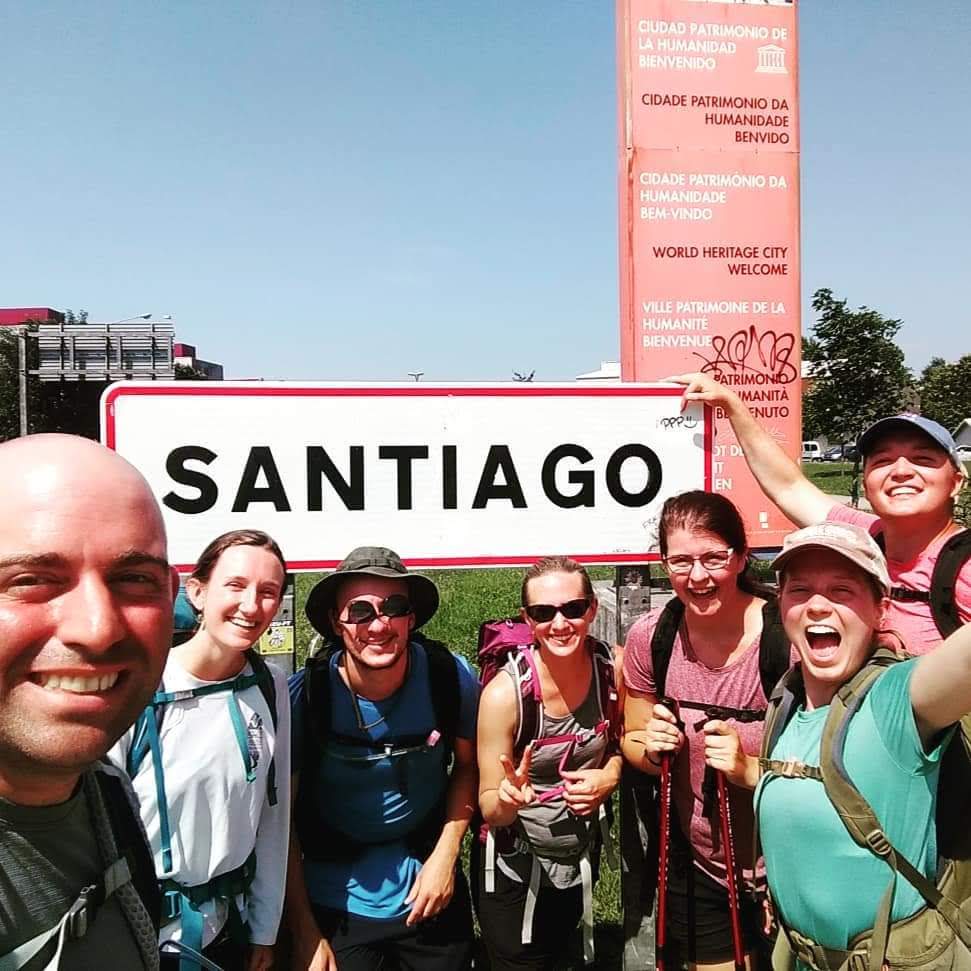
Read more about the Camino on my blog:
- A kinder, gentler start to the Camino de Santiago
- Ultralight Camino packing list
- The best albergues on the Camino
- My rules for walking the Camino and “Never take a bus” is not one of them
- Things that really surprised me about the Camino (and some advice too)
- Eating gluten-free on the Camino
- What’s a queer ex-Catholic doing on the Camino?
- Walking the Camino as a solo female

Discover more from We Belong Outside
Subscribe to get the latest posts sent to your email.

